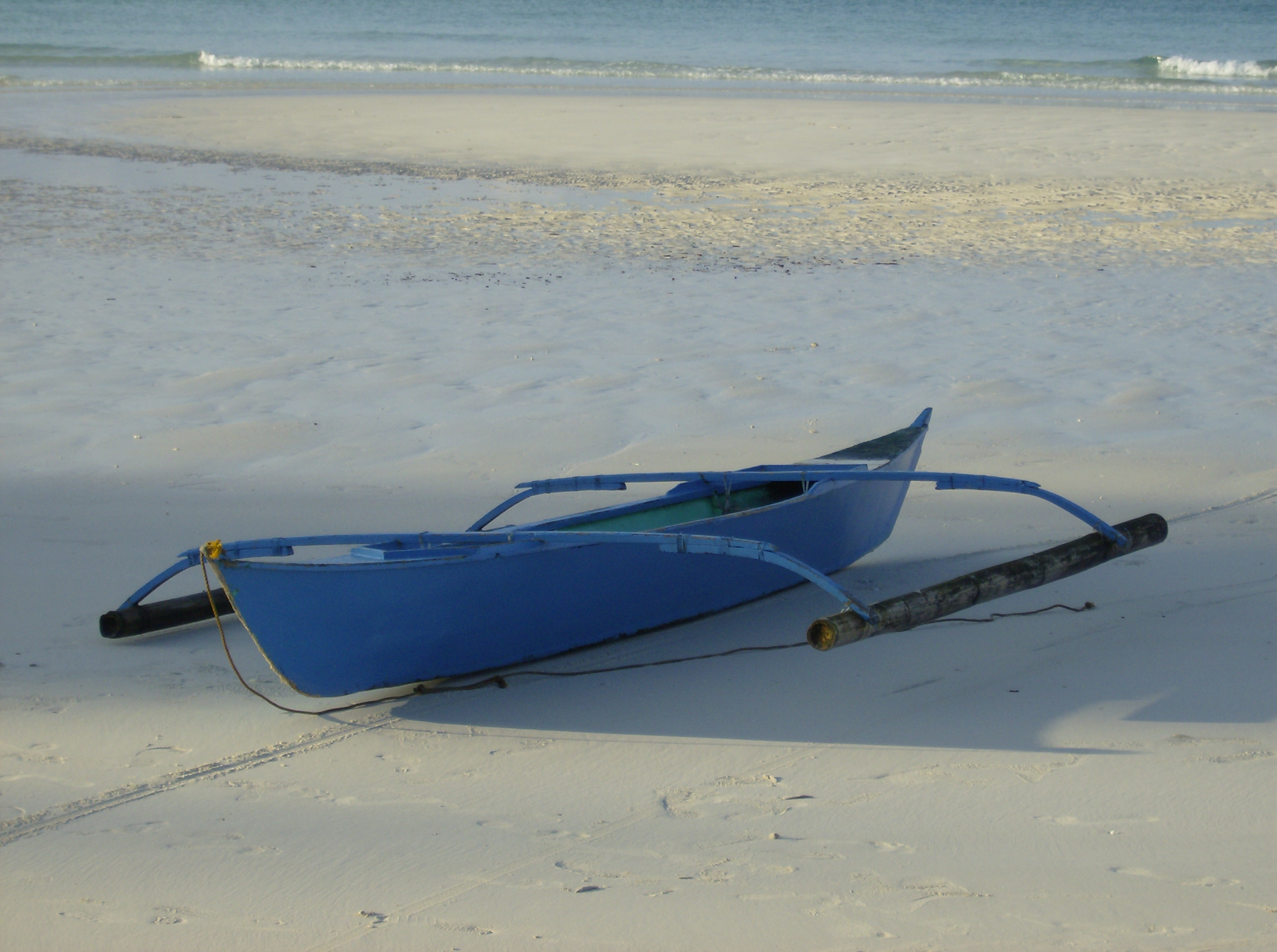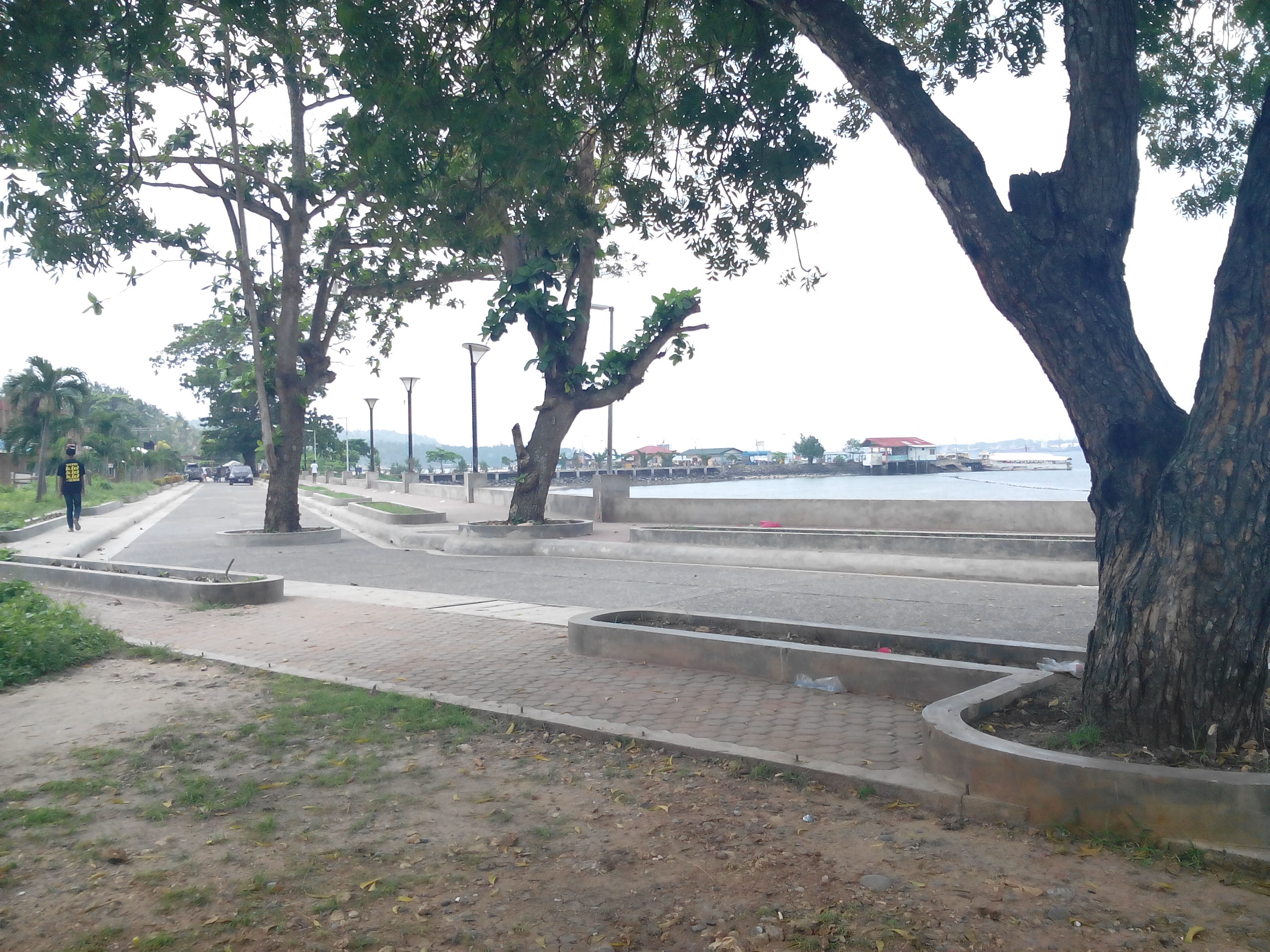|
Bigiw
Bigiw is a small Outrigger canoe, double-outrigger sailboat native to the islands of Mindanao (particularly in the Island Garden City of Samal), Visayas, and Palawan in the Philippines. It is used for personal transport or small-scale fishing and can hold one to three people. It is traditionally propelled by sails and steered with a single oar, but is commonly motorized in modern times. It can also be paddled. The sail type used is predominantly triangular crab claw sails (''banog pindang''), but it can also use spritsails or tanja sails. Bigiw is similar to the vinta and other small Philippine outrigger boats (''Bangka (boat), bangka''), but differs in that its prow and stern are not open or covered by flat decks but is uniquely knife-like and sharply-pointed. They are named after the ''bigiw'', the local name for needlefish, due to its shape. See also *Vinta *Paraw References Sailboat types Indigenous ships of the Philippines Multihulls Outrigger canoes {{Philipp ... [...More Info...] [...Related Items...] OR: [Wikipedia] [Google] [Baidu] |
Bangka (boat)
Bangka are various native watercraft of the Philippines. It originally referred to small double-outrigger dugout canoes used in rivers and shallow coastal waters, but since the 18th century, it has expanded to include larger lashed-lug ships, with or without outriggers. Though the term used is the same throughout the Philippines, "bangka" can refer to a very diverse range of boats specific to different regions. Bangka was also spelled as banca, panca, or panga (Grammatical gender, m. banco, panco, pango) in Spanish language, Spanish. It is also known archaically as wikt:sakayan, sakayan (also spelled sacayan). Etymology ''Bangka'' is derived from Proto-Malayo-Polynesian ''*baŋkaʔ'', with cognates including Kavalan language, Kavalan ''bangka'', Mori language, Mori ''bangka'', and Sumbawa language, Sumbawa ''bangka''. It is a Doublet (linguistics), doublet of two other protoforms referring to boats: Proto-Austronesian ''*qabaŋ'' and Proto-Central-Malayo-Polynesian ''*waŋka'' ... [...More Info...] [...Related Items...] OR: [Wikipedia] [Google] [Baidu] |
Island Garden City Of Samal
Samal, officially the Island Garden City of Samal (IGaCOS; ; ) is a component city in the province of Davao del Norte, Philippines. According to the 2020 census, it has a population of 116,771 people. It is made up of Samal Island and the smaller Talikud Island in Davao Gulf, from the merger of former municipalities of Samal, Babak, and Kaputian. Samal is a part of the Metropolitan Davao area and is two kilometers away from Davao City, in mainland Mindanao, the largest city and the primary economic center of that island. Etymology The name Samal was derived from the Sama-Bajau peoples, the natives who were the first inhabitants of the island. The first datu on the island was Datu Taganiyug, a native of what is now Peñaplata, today the governance center of the city. In the past, the people of the island named a place about what the said place is known for. For example, the name ''Peñaplata'' is said to be derived from the word "piña" or pineapple because of the abundan ... [...More Info...] [...Related Items...] OR: [Wikipedia] [Google] [Baidu] |
Vinta
The vinta is a traditional outrigger boat from the Philippine island of Mindanao. The boats are made by Sama-Bajau, Tausug and Yakan peoples living in the Sulu Archipelago, Zamboanga peninsula, and southern Mindanao. It is also made by the Sama-Bajau that lived in east coast of Sabah, Malaysia. Vinta are characterized by their colorful rectangular lug sails (''bukay'') and bifurcated prows and sterns, which resemble the gaping mouth of a crocodile. Vinta are used as fishing vessels, cargo ships, and houseboats. Smaller undecorated versions of the vinta used for fishing and transportation are known as tondaan and bogo-lamak. The name "vinta" is predominantly used in Zamboanga, Basilan, and other parts of mainland Mindanao. It is also known as pilang or pelang among the Sama-Bajau of the Tawi-Tawi islands; dapang or depang among the Tausug in Sulu; balanda or binta among the Yakan in Basilan; and bogo-lamak among the Sama-Bajau in the east coast of Sabah. It can also ... [...More Info...] [...Related Items...] OR: [Wikipedia] [Google] [Baidu] |
Paraw
Paraw (also spelled ''parao'') are various double outrigger sail boats in the Philippines. It is a general term (similar to the term '' bangka'') and thus can refer to a range of ship types, from small fishing canoes to large merchant lashed-lug plank boats ('' balangay'' or ''baloto'') with two outriggers (''katig'') propelled by sails (usually a large crab-claw sail opposite a smaller triangular foresail) Etymology The word ''paraw'' (also spelled ''parao'') is a cognate of the terms '' proa'' of the Pacific Islands, and '' perahu'' or ''prau'' of Malay-Indonesia. It refers to outrigger boats propelled by sails (''layag''). It is a type of '' bangka'', the wider term used for boats (with or without outriggers) in the Philippines. Characteristics The paraw has three major elements that make it a paraw: the ''bangka'' (canoe or main hull), the ''katig'' (outriggers), and the ''layag'' (sails). Motorized versions of bangkas (with outriggers) are commonly known as pump b ... [...More Info...] [...Related Items...] OR: [Wikipedia] [Google] [Baidu] |
Vinta
The vinta is a traditional outrigger boat from the Philippine island of Mindanao. The boats are made by Sama-Bajau, Tausug and Yakan peoples living in the Sulu Archipelago, Zamboanga peninsula, and southern Mindanao. It is also made by the Sama-Bajau that lived in east coast of Sabah, Malaysia. Vinta are characterized by their colorful rectangular lug sails (''bukay'') and bifurcated prows and sterns, which resemble the gaping mouth of a crocodile. Vinta are used as fishing vessels, cargo ships, and houseboats. Smaller undecorated versions of the vinta used for fishing and transportation are known as tondaan and bogo-lamak. The name "vinta" is predominantly used in Zamboanga, Basilan, and other parts of mainland Mindanao. It is also known as pilang or pelang among the Sama-Bajau of the Tawi-Tawi islands; dapang or depang among the Tausug in Sulu; balanda or binta among the Yakan in Basilan; and bogo-lamak among the Sama-Bajau in the east coast of Sabah. It can also ... [...More Info...] [...Related Items...] OR: [Wikipedia] [Google] [Baidu] |
Outrigger Canoe
Outrigger boats are various watercraft featuring one or more lateral support floats known as outriggers, which are fastened to one or both sides of the main hull (watercraft), hull. They can range from small dugout (boat), dugout canoes to large plank-built vessels. Outrigger boats can also vary in their configuration, from the ancestral double-hull configuration (catamarans), to single-outrigger vessels prevalent in the Pacific Islands and Madagascar, to the double-outrigger vessels (trimarans) prevalent in Maritime Southeast Asia, Island Southeast Asia. They are traditionally fitted with Austronesian sails, like the crab claw sails and tanja sails, but in modern times are often fitted with petrol engines. Unlike a single-hulled vessel, an outrigger or double-hull vessel generates stability as a result of the distance between its hulls rather than due to the shape of each individual hull. As such, the hulls of outrigger or double-hull boats are typically longer, narrower and mo ... [...More Info...] [...Related Items...] OR: [Wikipedia] [Google] [Baidu] |
Indigenous Ships Of The Philippines
Indigenous may refer to: *Indigenous peoples *Indigenous (ecology), presence in a region as the result of only natural processes, with no human intervention *Indigenous (band), an American blues-rock band *Indigenous (horse), a Hong Kong racehorse * ''Indigenous'' (film), Australian, 2016 See also *Indigenous Australians *Indigenous language *Indigenous peoples in Canada *Indigenous religion *Missing and Murdered Indigenous Women Missing and Murdered Indigenous Women are instances of violence against Indigenous women in Canada and the United States, notably those in the First Nations in Canada and Native American communities, but also amongst other Indigenous peoples s ... * Native (other) * * {{disambiguation ... [...More Info...] [...Related Items...] OR: [Wikipedia] [Google] [Baidu] |
Sailboat Types
A sailboat or sailing boat is a boat propelled partly or entirely by sails and is smaller than a sailing ship. Distinctions in what constitutes a sailing boat and ship vary by region and maritime culture. Types Although sailboat terminology has varied across history, many terms have specific meanings in the context of modern yachting. A great number of sailboat-types may be distinguished by size, hull configuration, keel type, purpose, number and configuration of masts, and sail plan. Popular monohull designs include: Cutter The cutter is similar to a sloop with a single mast and mainsail, but generally carries the mast further aft to allow for two foresails, a jib and staysail, to be attached to the head stay and inner forestay, respectively. Once a common racing configuration, today it gives versatility to cruising boats, especially in allowing a small staysail to be flown from the inner stay in high winds. Catboat A catboat has a single mast mounted far forw ... [...More Info...] [...Related Items...] OR: [Wikipedia] [Google] [Baidu] |
Needlefish
Needlefish (family Belonidae) or long toms are piscivorous fishes primarily associated with very shallow marine habitats or the surface of the open sea. Some genera include species found in marine, brackish, and freshwater environments (e.g., '' Strongylura''), while a few genera are confined to freshwater rivers and streams, including '' Belonion'', '' Potamorrhaphis'', and '' Xenentodon''. Needlefish closely resemble North American freshwater gars (family Lepisosteidae) in being elongated and having long, narrow jaws filled with sharp teeth, and some species of needlefishes are referred to as gars or garfish despite being only distantly related to the true gars. In fact, the name " garfish" was originally used for the needlefish '' Belone belone'' in Europe and only later applied to the North American fishes by European settlers during the 18th century. Description Needlefish are slender, ranging from in length. They have a single dorsal fin, placed far back on the body, ... [...More Info...] [...Related Items...] OR: [Wikipedia] [Google] [Baidu] |
Tanja Sail
Tanja sail ( Malay: ''layar tanjak'') or tanja rig is a type of sail commonly used by the Austronesian people, particularly in Maritime Southeast Asia. It is also known as the tilted square sail, canted rectangular sail, rectangular balance lug, or balance lug sail in English.Needham, Joseph (1971). ''Science and Civilisation in China: Volume 4, Physics and Physical Technology, Part III: Civil Engineering and Nautics''. Cambridge: Cambridge University Press. In historical sources, a tanja sail is sometimes incorrectly referred to as a lateen sail or simply square sail. Etymology Also called tanjaq, tanjak, tanja', tanjong, or tanjung sail. The Mandar people call it ''sombal tanjaq'' because when the wind blows the lower part of the sail (''peloang'') would "''mattanjaq''" (lit. "kick"). In colonial British records, it is sometimes written as "lyre ''tanjong''", a misspelling of ''layar tanjong'' (''layar'' means "sail" in Malay; ''layag'' in Philippine languages). Origin ... [...More Info...] [...Related Items...] OR: [Wikipedia] [Google] [Baidu] |
Spritsail
The spritsail is a four-sided, fore-and-aft sail that is supported at its highest points by the mast and a diagonally running spar known as the sprit. The foot of the sail can be stretched by a boom or held loose-footed just by its sheets. A spritsail has four corners: the throat, peak, clew, and tack. The Spritsail can also be used to describe a rig that uses a spritsail. Historically, spritsails were the first European fore-and-aft rigs, appearing in Greco-Roman navigation in the 2nd century BC. The rig The luff of the sail is bound to the mast, but unlike the gaff rig where the head is bound to a spar, this rig supports the leech of the sail by means of a diagonal spar or spars named a sprit ( ). The forward end of the sprit spar is attached to the mast, with the after end of the sprit spar attached to the peak. The sprit is steadied and controlled from the deck by a pair of wire vangs ( ) attached to the peak of the sail. It is said to be the ancestor of the ... [...More Info...] [...Related Items...] OR: [Wikipedia] [Google] [Baidu] |






